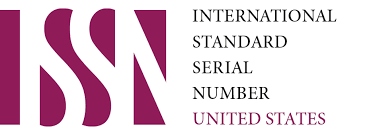Philosophical Analysis Of The Influence Of International Migration On The Process Of Intercultural Communication
Keywords:
migration, humanity, communicationAbstract
Intercultural communication is private or public communication between representatives of different human cultures. As a result of migration, the situation of international intercultural communication will increase. This article philosophically analyzes the influence of migration types on the material communication of humanity and the transformation of values.
References
Похлебаева А. Понятие миграции и ее классификации. // Журнал международного права и
международных отношений. 2005.- № 3. https://elib.bsu.by/handle/123456789/27601
Денисенко М.Б. Миграциология/М.Б. Денисенко , В.А.Ионцев Б.С. Хорев.-М.: Из-во МГУ, 1989. С.
-8.
Ионцев В.А. Международная миграция: населения: теория и истрия изучения. – М.: Диалог-МГУ,
– 370 с.–(Международная миграции янаселения: Россия и современный мир; Вып. 3). С.26.
Миграционная политика. Управление миграционными процессами / Е. Волосенкова, П. Кабаченко,
Е. Тарасова // Методология и методы изучения миграционных процессов : Междисциплинар. учеб.
пособ. /Под ред. Ж. Зайончковской, И Молодиковой, В. Мукомеля. - М. : Центр миграционных
исследований, 2009.- С. 370.
Толаметова З.А. Халкаро мехнат миграцияси ва унинг узига хос хусусиятлари.//Иктисод ва
молия/Экономика финансы. 2016. №3 61-б.
Rabievich, K. R. (2022, August). RELATIONSHIPS OUTSIDE OF MARRIAGE-AS A SPIRITUAL AND
MORAL PROBLEM. In E Conference Zone (pp. 97-100).
KOMILOV, R. R. (2021). BREAKING OF FAMILY RELATIONSHIP IN PERIOD OF
GLOBALIZATION. International Journal of Philosophical Studies and Social Sciences, 1(2), 56-62
Downloads
Published
Issue
Section
License
Copyright (c) 2025 Halimov Sherzod Igamberdiyevich

This work is licensed under a Creative Commons Attribution-NonCommercial 4.0 International License.
User Rights
Under the Creative Commons Attribution-NonCommercial 4.0 International (CC-BY-NC), the author (s) and users are free to share (copy, distribute and transmit the contribution).
Rights of Authors
Authors retain the following rights:
1. Copyright and other proprietary rights relating to the article, such as patent rights,
2. the right to use the substance of the article in future works, including lectures and books,
3. the right to reproduce the article for own purposes, provided the copies are not offered for sale,
4. the right to self-archive the article.













